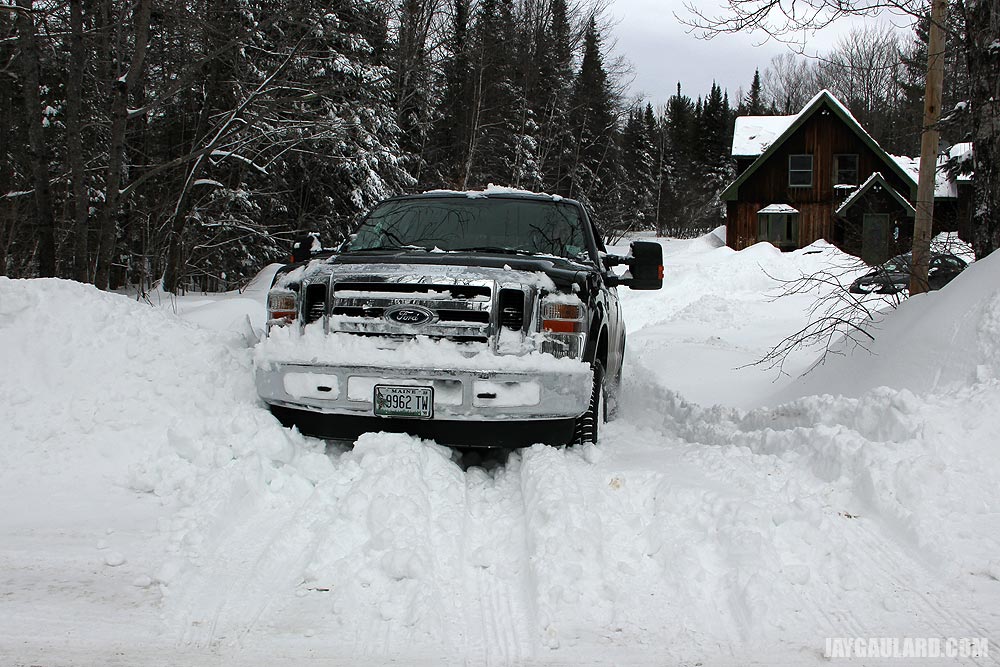Every veteran Saskatchewan driver has been stuck in the snow at one point or another. In some cases, it’s unavoidable, as the vehicle becomes hung up on a bed of deep snow. In others, it’s simply a case of using inadequate tires or techniques. So, the obvious first step is a set of winter tires with good tread depth. With that out of the way, we can focus on technique. Here are the most important things to remember when driving in deep snow:
Keep the Tires Spinning While in Motion
In deep snow, you’re no longer relying on friction to accelerate and stop. On that surface, your tires need to dig into the snow and push off of it for grip. While a winter tire tread should provide enough grip for calm driving in most snow conditions, an increasing amount of wheel spin is often necessary for optimal power transfer as the snow cover deepens. Don’t be afraid to get the snow flying when you’re powering through a snow drift.
Turn Off Traction Control
Traction control prevents wheel spin, so is counterproductive in deep snow. This is why even the strictest of electronic nannies allow traction control to be disabled with the push of a button. But disable it before you start moving. Once it starts fighting you, it will usually ignore attempts to shut it off until you let off the throttle for a bit, and that might be enough to bring you to a halt and strand you.
Some vehicles will even re-activate traction control every time you go from forward to reverse, so keep that in mind if you’re changing directions to free yourself. You may want to research ways to disable the traction control system if your vehicle is programmed in such an intrusive way.
Do Not Spin the Tires While Stationary
Wheel spin works great in snow while in motion, but once you are stationary you need to avoid it as much as possible. In that situation, spinning the tires will simply dig holes that the tires can’t get out of, along with polishing the solid base underneath into slippery ice. Be very gentle with your throttle inputs until you are in motion, and get off the throttle the moment the vehicle comes to a halt. Don’t try to force things if you are only able to make small bits of progress with each bid for freedom.
Move in Straight Lines Only
It’s a lot harder for a vehicle to change direction in snow than to travel in straight lines, so the last thing you want to do is to try to turn while you are stuck. In that situation, keep the front wheels perfectly centered and move forward and backward in straight lines only, creating an escape path of tire tracks that grows in length with each forward/reverse cycle. Avoid spinning the tires on this path. Use wheel spin only when the drive wheels are on virgin snow, and only while you’re still in motion.
When the path is long enough to get an adequate run, use your inertia and plenty of wheel spin to power through the fresh stuff. Once you’re in motion and the powder is flying, the vehicle will now be capable of direction changes. But keep in mind that every steering attempt will scrub some of your speed, so be careful not to lose too much of that inertia you gained. You may get stuck and have to start over again after re-orienting your vehicle on the first attempt. Don’t get frustrated; your vehicle has made progress if it’s pointing in a better direction. As long as you didn’t dig yourself into a hole with stationary wheel spin, just build a new set of paths and your next run should be more successful with less steering input required.
Carry a Shovel
Sometimes, getting stuck will be unavoidable. In those situations, having a shovel in your trunk and suitable winter clothing may mean the difference between ten minutes of labor before you’re back on the road, or waiting hours for a tow truck. Plastic shovels can break on icy snow, and a shaft that is too short or flimsy can reduce the effectiveness of the shoveling effort, so a metal shovel blade with a solid wood shaft is preferred. However, a cheap plastic folding shovel digs snow a lot better than your hands and will get the job done in most situations, so make sure you carry at least that.
Lend a Hand
If you’re physically capable and have a few minutes to spare, a push from even a single person can often make a big difference in freeing a vehicle from the snow. Often, all it takes is a light push and instructions to the driver on proper snow escape techniques. Either way, a few minutes of your time can help another person to save hours of their own time and even that of others if the stuck vehicle is obstructing a roadway.
